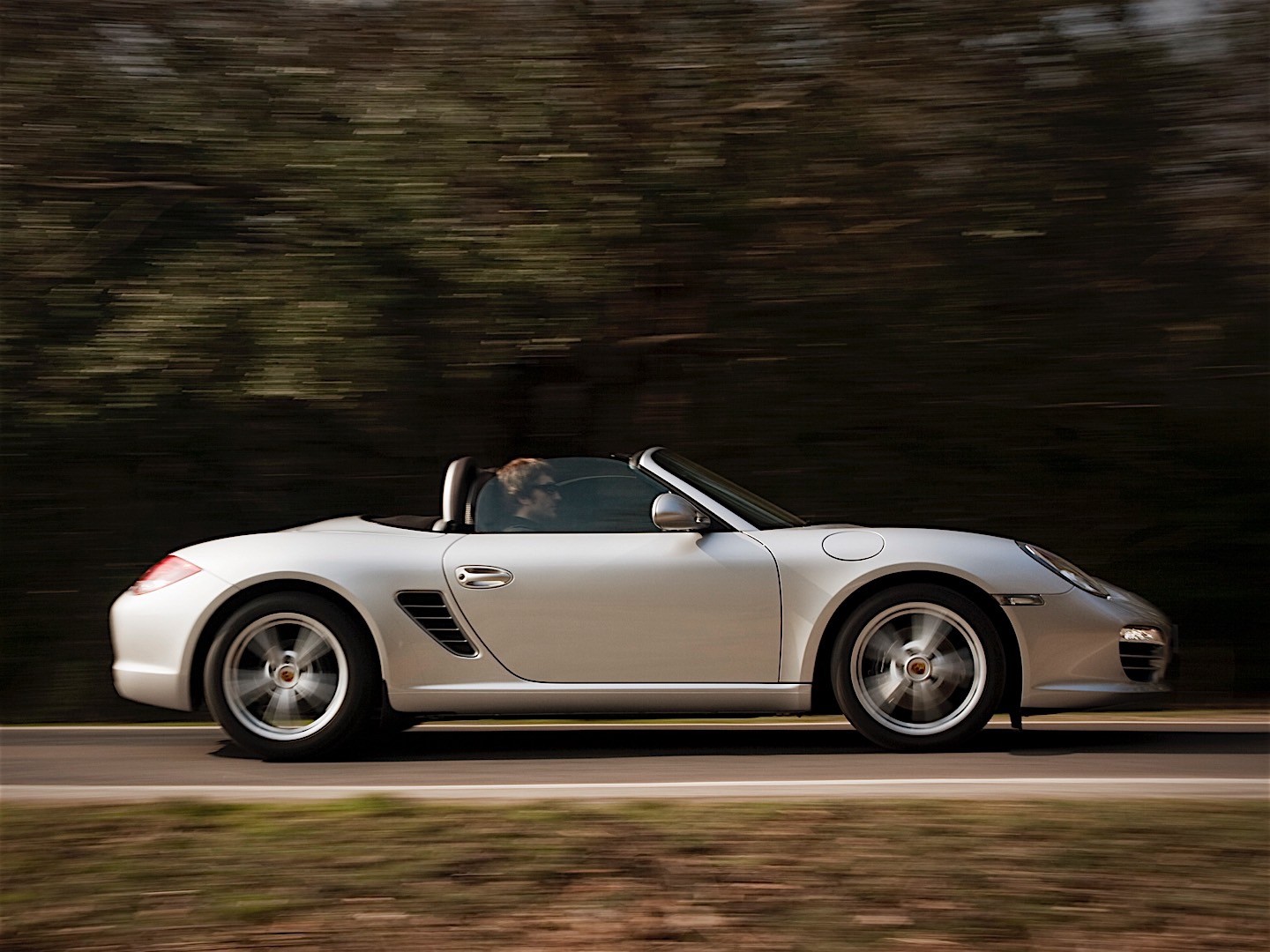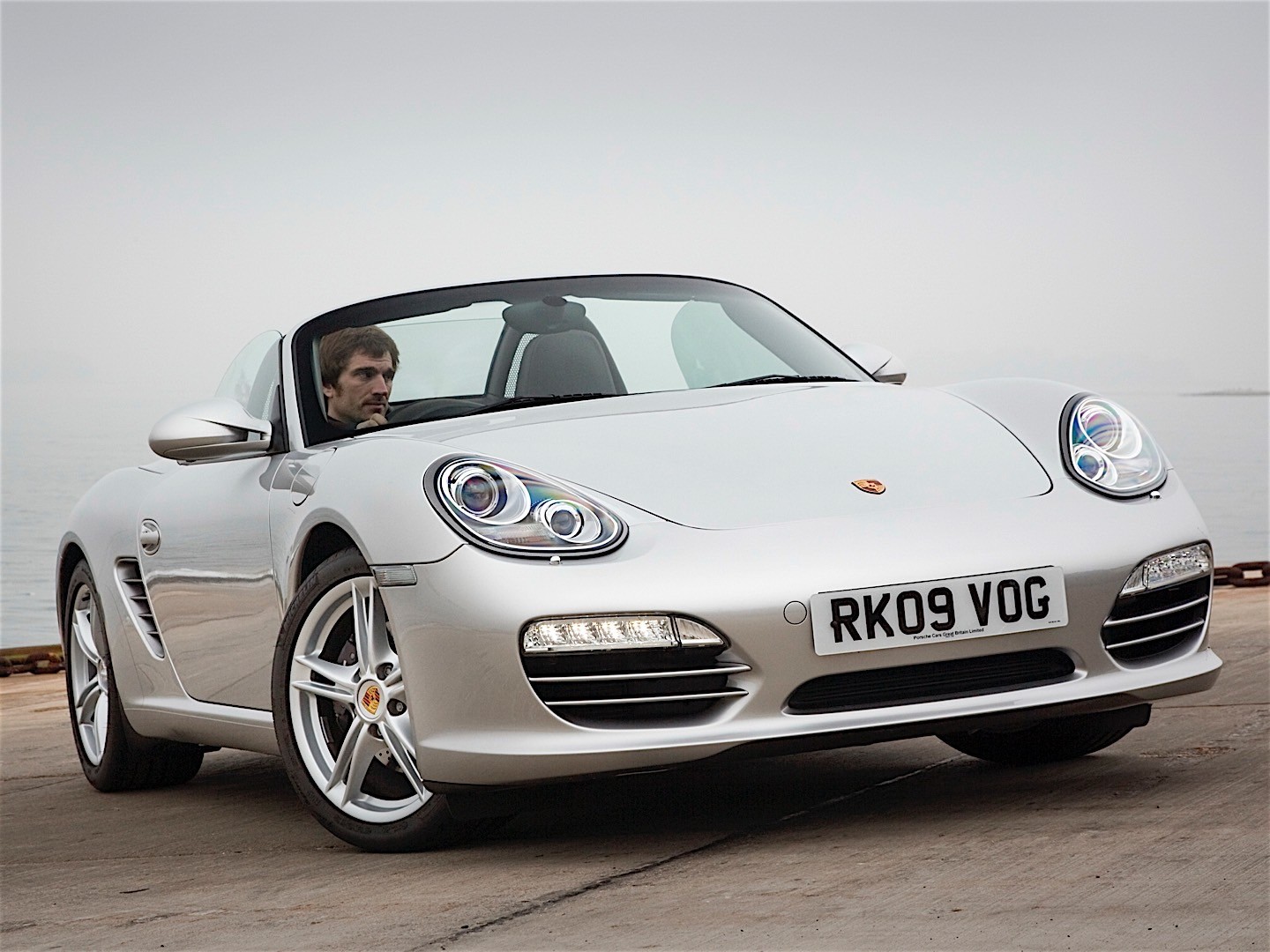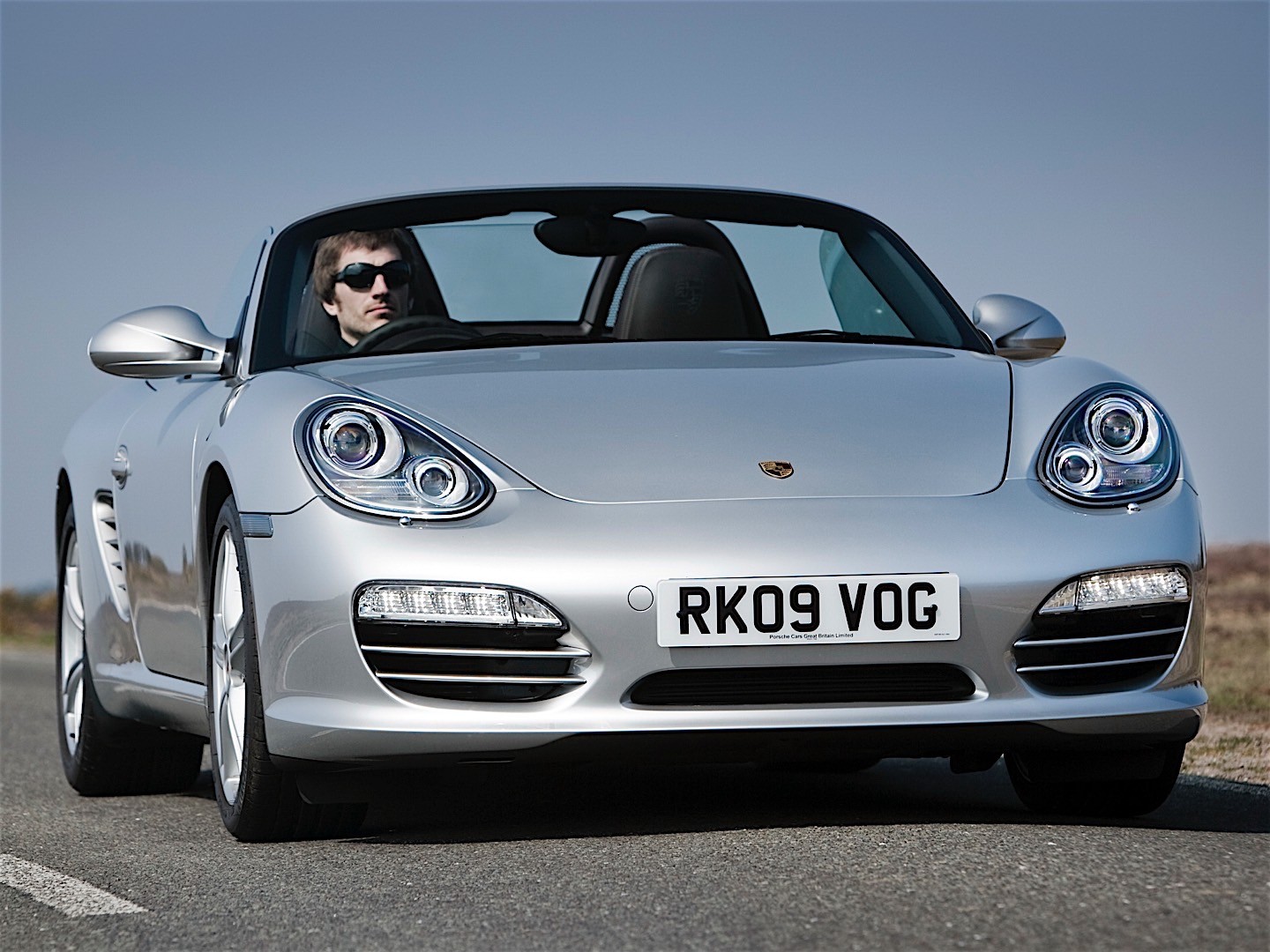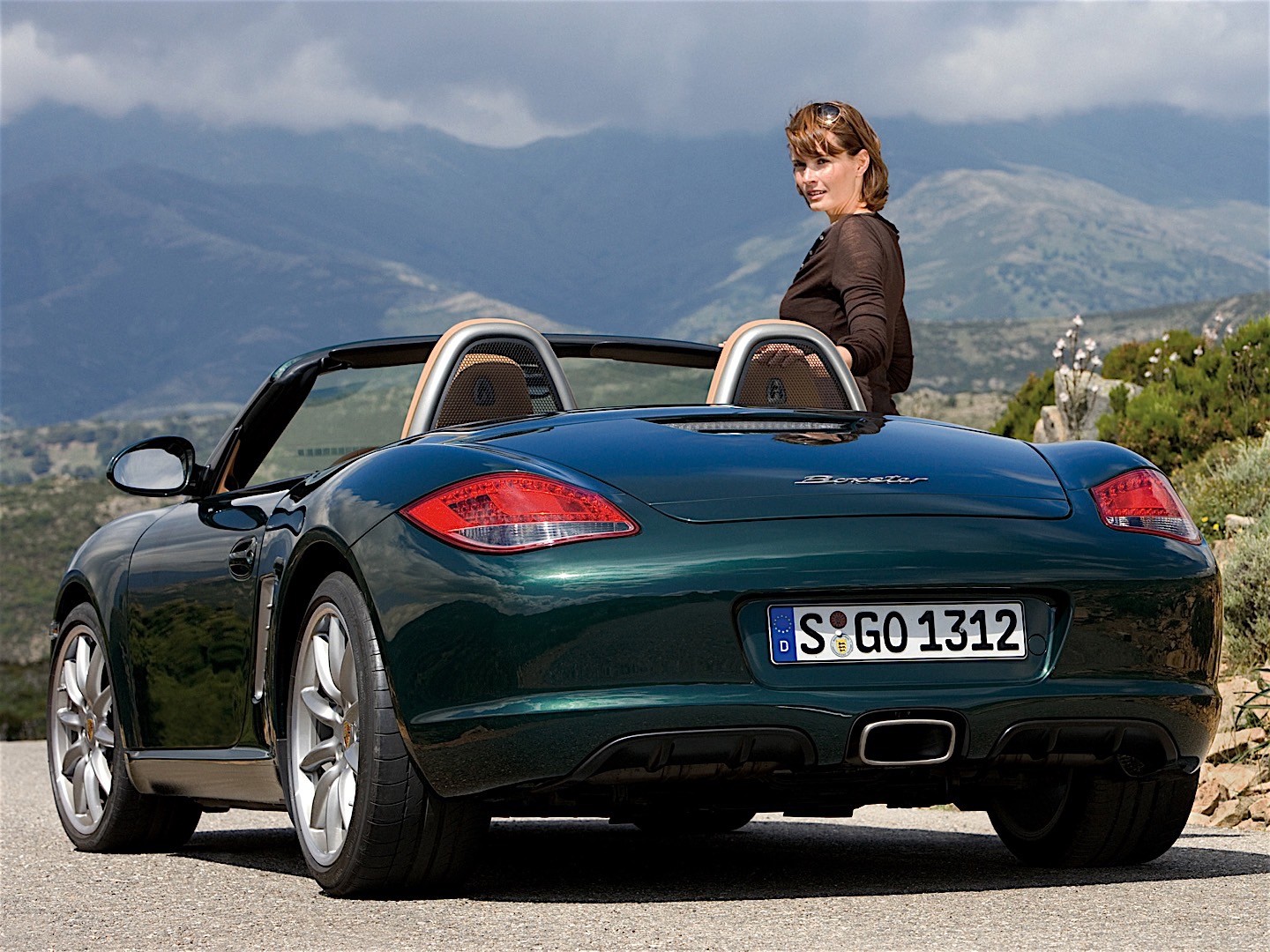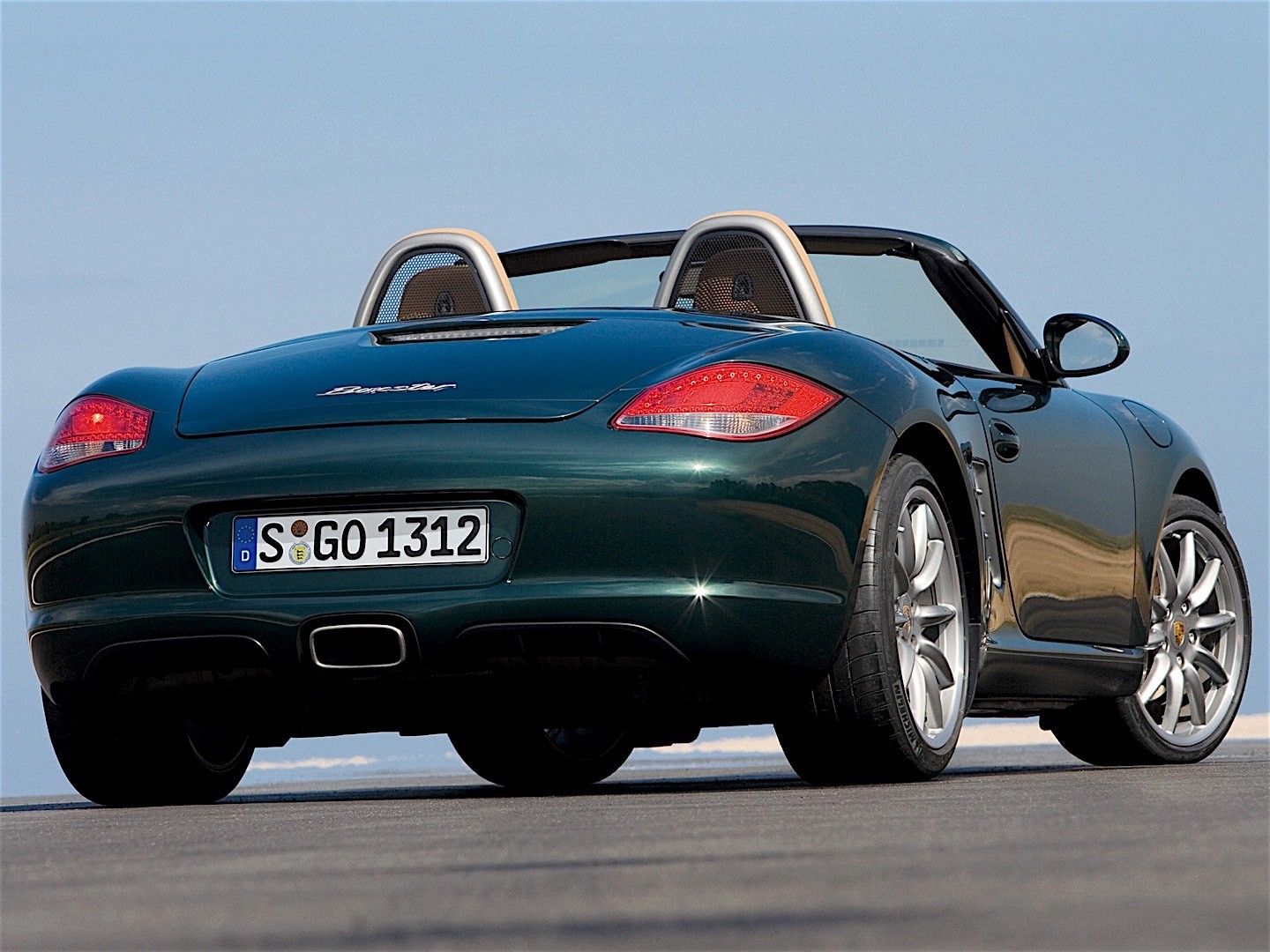(2009 – 2012) Porsche Boxster – Ultimate Guide
In 2009, the second generation of the Boxster received new technologies and more power. It reached almost the same power as the former Boxster S, from the first generation. The 2.9-liter unit replaced the older 2.7-liter engine and offered 10 hp more than the older engine. It was not a big difference. It was paired as standard to a 6-speed manual, and a 7-speed PDK (Porsche dual-clutch) automatic was available as an option. The Chrono Package featured the Launch-control system, which allowed the 2002 Boxster to cut an additional 0.1 seconds from the 0-100 kph (0-62 mph) time when compared with the regular PDK version, without the Chrono Package. For better handling, the Boxster was fitted as standard with Porsche Stability Management.
Besides the new technological improvements, the Boxster received some minor aesthetic changes. The clear headlights were available with LED technology as an option. The rod-shaped turn-signals featured LED technology added distinction to the car’s looks, and they were further enhanced by their horizontal arrangement in the outer air intakes. The rectangular fog lights were fitted as standard.
Inside, the Boxster received a new CDR-30 CD radio, with an option for a new Porsche Communication Management and navigation system with hard-drive memory. External devices such as iPod, USB stick, or Bluetooth connectivity were supported as well.
Pictures
Press Release
In 1948, the 356 was the first sports car to bear the Porsche name, and in July that year the lightweight mid-engined roadster achieved its first motorsport victory. In 1953, the Porsche 550 Spyder was launched. This agile, lightweight race car was powered by a high performance ‘boxer’ engine which took it to countless international victories.
Through 60 years of automotive evolution so much has changed. Yet every Porsche Boxster is built on these first principles. Sports performance, lightweight construction, agility and pure driving pleasure. The technology Porsche use may have developed, but the company’s ability to produce a two-seat, mid-engined sports car unlike any other on the road remains.
Porsche presented the second generation of the mid-engined Porsche Boxster roadster at the 2008 Los Angeles Motor Show. The highlight of the new generation is the new flat-six ‘boxer’ engines, developed with new technical features from the ground up, providing not only more power, but also significantly greater fuel efficiency.
A further improvement of both fuel economy and performance is guaranteed by the Porsche Doppelkupplungsgetriebe (PDK), the new double-clutch gearbox now available as an option on both the Porsche Boxster and Boxster S.
Newly-developed ‘boxer’ engines deliver more power on less fuel
Displacing 2.9-litres, the engine of the Porsche Boxster develops 255 bhp (188 kW) in the Boxster, an increase of 10 horsepower over the prior 2.7-litre model.
The 3.4-litre power unit in the Porsche Boxster S now features Direct Fuel Injection, and delivers 310 bhp (228 kW), up by 15 bhp.
An impressive power-to-weight ratio imbues the two Porsche Boxster models with optimum driving dynamics. For example, with the new six speed manual transmission fitted as standard, the Porsche Boxster accelerates from 0-62 mph (100 km/h) in 5.9 seconds. And the Boxster S, when fitted with PDK transmission and Launch Control (featured in the optional Sports Chrono Package Plus), accelerates from 0-62mph (100km/h) in 5.0 seconds.
When combined with PDK, the new 2.9-litre engine fitted to the Porsche Boxster clearly breaks through the 30.0mpg fuel consumption boundary. Indeed, the figure of 31.0mpg (9.1 litres/100km) is approximately 10 per cent better than the previous model with the Tiptronic S automatic transmission. Increasing fuel economy by an even more significant 15 per cent to 30.1mpg (9.4 litres/100km), the 3.4-litre Boxster S with PDK offers an even greater saving over its predecessor with Tiptronic S.
In parallel with the improvement in fuel economy, so emissions of the engines have decreased also. Depending on model, emissions have been reduced by up to 16 per cent. The Porsche Boxster with the standard six-speed manual gearbox emits 221g/km CO2, and 214g/km CO2 when fitted with PDK. The Boxster S manual emits 223 g/km CO2, and 221 g/km CO2 with PDK.
Significantly, these developments move every Porsche Boxster model – whether manual or PDK – into Band F for Vehicle Excise Duty and company car taxation purposes.
Direct Fuel Injection standard on 3.4-litre S engine
The driver benefits from a further advantage of direct injection every time they touch the throttle pedal: with fuel being injected fractions of a second prior to combustion, the engines respond more directly and spontaneously to even the slightest movement of the driver’s right foot. This is not only the case when accelerating, but also when lifting off the throttle, for engine speed drops more quickly and smoothly since there is no residual fuel left in the intake manifold which might otherwise prolong the combustion process.
Depending on engine load and speed, fuel is injected into the combustion chamber at a pressure of 120 bar. The big advantage is that unlike conventional intake manifold injection, direct fuel injection serves to form the fuel/air mixture directly in the combustion chamber. This better mixes the air and fuel in the cylinder, establishing an important prerequisite for clean and complete combustion. This ensures the ‘homogeneous’ operation of the power unit with a consistent balance of the fuel/air mixture in the combustion chamber at all times and under all running conditions. Such smooth operation guarantees optimum combustion and maintains low emissions, across a range of fuel qualities.
Design emphasises performance
The seamless blend of function and design has always been the Porsche philosophy. The result is a design consistency which is recognisable from every angle. A design which is both powerful and refined, and whose lines emphasise its sports performance.
The evolutionary styling of the next generation Porsche Boxster embodies these principles. The latest models are clearly distinguishable from outside through their newly-designed nose and tail. The new halogen headlights with their integrated direction indicators are reminiscent of the lights on the Carrera GT, while at the rear, new LED lights taper to the outside and are integrated elegantly in to the restyled bodywork.
The rod-shaped side lights in LED light conductor technology add distinction to the car’s looks, which are further enhanced through their horizontal arrangement in the outer air intakes. Yet a further highlight is provided by the rectangular fog lamps featured as standard.
For the first time, the Porsche Boxster is available with a Lights Package featuring bi-xenon headlights, dynamic cornering lights and LED day-time driving lights. Replacing the fog lamps, these light units are made up of four LEDs positioned next to one another.
PDK: shifting gears more quickly, reducing fuel consumption
The new Porsche Boxster models are available with the Porsche-Doppelkupplungsgetriebe (PDK) carried over directly from motor sport, and replacing the former Tiptronic S torque converter automatic transmission. When equipped with PDK, the Porsche Boxster accelerates from 0-62mph (100 km/h) 0.1 seconds faster than with the manual six-speed gearbox.
Acceleration is particularly fast and dynamic with the optional Sports Chrono Package Plus featuring Launch Control; this offers maximum acceleration from a standing start and also a Race Track Gearshift Strategy for the fastest conceivable gear change as an exclusive highlight on the PDK models.
Benefiting from Launch Control, the respective models accelerate from a standstill to 62 mph (100km/h) a further 0.2 seconds faster.
Porsche Doppelkupplungsgetriebe (PDK) – in detail
The next generation Porsche Boxster and Boxster S are available for the first time with the new Porsche Doppelkupplungsgetriebe (PDK), literally Porsche double-clutch gearbox. Offering no less than seven forward gears, the new gearbox combines the driving comfort of a torque converter-equipped automatic transmission with the dynamic manual gearshift functionality of a sequential racing gearbox. PDK also boasts an entirely automatic gearshift function, and replaces the Porsche Tiptronic S automatic transmission previously offered. Through its optimised and adaptive gearshift programmes, PDK further improves the acceleration of the Porsche Boxster models and reduces fuel consumption to an even lower level.
In principle, the PDK consists of a conventional manual gearbox and a hydraulic control system divided into two separate transmission units. Two wet clutches in radial arrangement, controlled hydraulically, and using oil for both cooling and lubrication, form the heart of the transmission. One clutch is for the first transmission unit with the uneven gear ratios (1,3,5,7) and reverse, and the other clutch is for the second transmission unit with the even gears (2,4,6). Via a number of pressure valves, the hydraulic control unit masterminds both the wet clutches and the shift cylinders activating the transmission ratio required.
The gearshift perceived by the driver comes not from the gears actually changing, but from the change of positive clutch engagement. In this case, the clutch on one transmission opens or disengages while the clutch on the other transmission closes or engages in a simultaneous process. The big advantage is an even faster gearshift than with a conventional manual gearbox or torque converter automatic transmission. The gears are already ‘in mesh’ when shifting and the power of the engine need not be interrupted in the process.
PDK also reduces to a minimum transmission power loss courtesy of the high standard of mechanical efficiency in the double-clutch, and this manifests itself in fuel economy improvements of approximately 13 per cent compared with a conventional Tiptronic S transmission. PDK also offers an advantage in terms of weight – despite two additional gears, it weighs 10kg less than Tiptronic S.
To use the various functions of the double-clutch transmission, the driver can either shift gears by means of sliding toggles on the spokes of the new steering wheel, or via the new gear selector lever. The driver can press forwards to shift the gears up, and press them from behind to shift downwards. Alternatively, pushing the gear selector lever forwards shifts up a gear, and pulling it back shifts down. The option of PDK costs £1,961.
This PDK gearshift principle was first developed by Porsche for motor sport 25 years ago. Porsche works drivers benefiting from this technology were able to accelerate faster than their competitors and keep both hands on the steering wheel while changing gears, thus avoiding even the slightest distraction while shifting.
The seven-speed PDK shifts gears up to 60 per cent faster than a conventional automatic transmission, and naturally, gives the Porsche Boxster models even better performance. And those in search of optimum driving dynamics have the option to combine PDK with Sport Chrono Package Plus, now featuring Launch Control.
Dynamic suspension and supreme brakes – a new option of limited-slip differential
The suspension with its new set-up gives the next generation Porsche Boxster models a combination of even greater driving dynamics and enhanced comfort all in one. Modification of the valve control map on the steering gear serves furthermore to reduce steering forces, giving the Porsche Boxster more agile and spontaneous steering behaviour.
The wheels come in new designs and are half an inch wider on the Porsche Boxster 2.9-litre model than in the past in order to accommodate the larger brake system of the S-models, which are now fitted on the front axle. The Porsche Boxster and Boxster S feature the latest generation Porsche Stability Management (PSM) now offering two new functions: Brake Pre-Loading and the Brake Assistant. Whenever the driver lifts off the throttle pedal very quickly – which is typical immediately prior to an emergency braking manoeuvre – the PSM hydraulic control unit builds up an appropriate level of pressure in the brakes before the driver even presses the pedal down, which has the effect of moving the brake pads slightly towards the discs for immediate action. This significantly improves brake response and shortens stopping distances accordingly.
When recognising that the driver is braking in an emergency due to very fast operation of the brake pedal and a defined brake force, the PSM hydraulic control unit actively delivers the brake pressure required for maximum stopping power.
In conjunction with 18- and 19-inch wheels, the new models in the Porsche Boxster range are also available with a limited-slip differential on the rear axle. Locking action is 22 per cent under power and 27 per cent in overrun. The result is a significant improvement of both traction and stability providing a substantially higher level of performance on winding roads, particularly on the race track. Yet a further advantage is the more stable load change behaviour. At the same time, the mechanical limited-slip differential, through its particular function, interacts perfectly with the electronic ABD Automatic Brake Differential for optimum traction control, the locking action delaying the tendency of one wheel to spin on a road surface slippery only on one side.
New audio and communication systems
The next generation Porsche Boxster features as standard the new CDR-30 CD radio. The new Porsche Communication Management (PCM) 3.0 complete with hard disc navigation serves is available as an option, and when specified adopts the role as the central control unit for all audio, communication and navigation features.
PCM 3.0 is now more versatile, efficient and easier to use than before, standing out in particular through its touch-screen control which enables the driver to select specific functions simply by pressing the appropriate key on the larger 6.5-inch monitor. PCM 3.0 is available with highly convenient voice control and, in conjunction with the optional, universal audio interface, can now be used also to control external audio sources such as an iPod. USB stick or Bluetooth.
Enthusiasts of all-weather, open-topped motoring will also appreciate the option of seat ventilation combined with seat heating.
The next generation Porsche Boxster went on sale in the UK and Ireland on February 21st 2009. The Porsche Boxster is priced from £34,420 and the Boxster S priced from £41,250. Customers will also be able to explore the dynamic attributes of their car, and develop their own skills behind the wheel, courtesy of a Driving Experience Programme at the new Porsche Driving Experience Centre at Silverstone.
Specifications Porsche Boxster
Capacity: 2893 cc
Bore: 89.0 mm (3.50″)
Stroke: 77.5 mm (3.05″)
Compression Ratio: 11.5:1
Engine Output: 188 kW (255 bhp) at 6400 rpm
Max Torque: 290 Nm (214 lb-ft) from 4400-6000 rpm
Output per Liter: 65.0 kW/88.1 bhp
Max Engine Speed: 7500 rpm
Fuel Grade: Premium plus
Dimensions
Length: 4342 mm (170.9″)
Width: 1801 mm (70.9″)
Height: 1292 mm (50.9″)
Wheelbase: 2415 mm (95.1″)
Track
front: 1490 mm (58.7″)
rear: 1534 mm (60.4″)
Luggage compartment capacity, overall, to VDA
front: 150 liters (5.25 cu ft)
rear: 130 liters (4.55 cu ft)
Fuel tank: 65 litres (17.2 gal)
Unladen weight, DIN: 1335 kg (2944 lb)
Max permissible weight: 1635 kg (3605 lb)
Performance
Top speed: 263 km/h (163 mph)
0-100 km/h: 5.9 s
0-160 km/h: 13.6 s
0-200 km/h: 22.3 s
Standing-start 1 km: 25.6 s
Fuel Consumption to EU4/EU5
Urban: 13.6/13.8 l/100 km
Extra-urban: 6.8/6.9 l/100 km
Combined: 9.2/9.4 l/100 km
CO2 Emissions: 221 g/km











